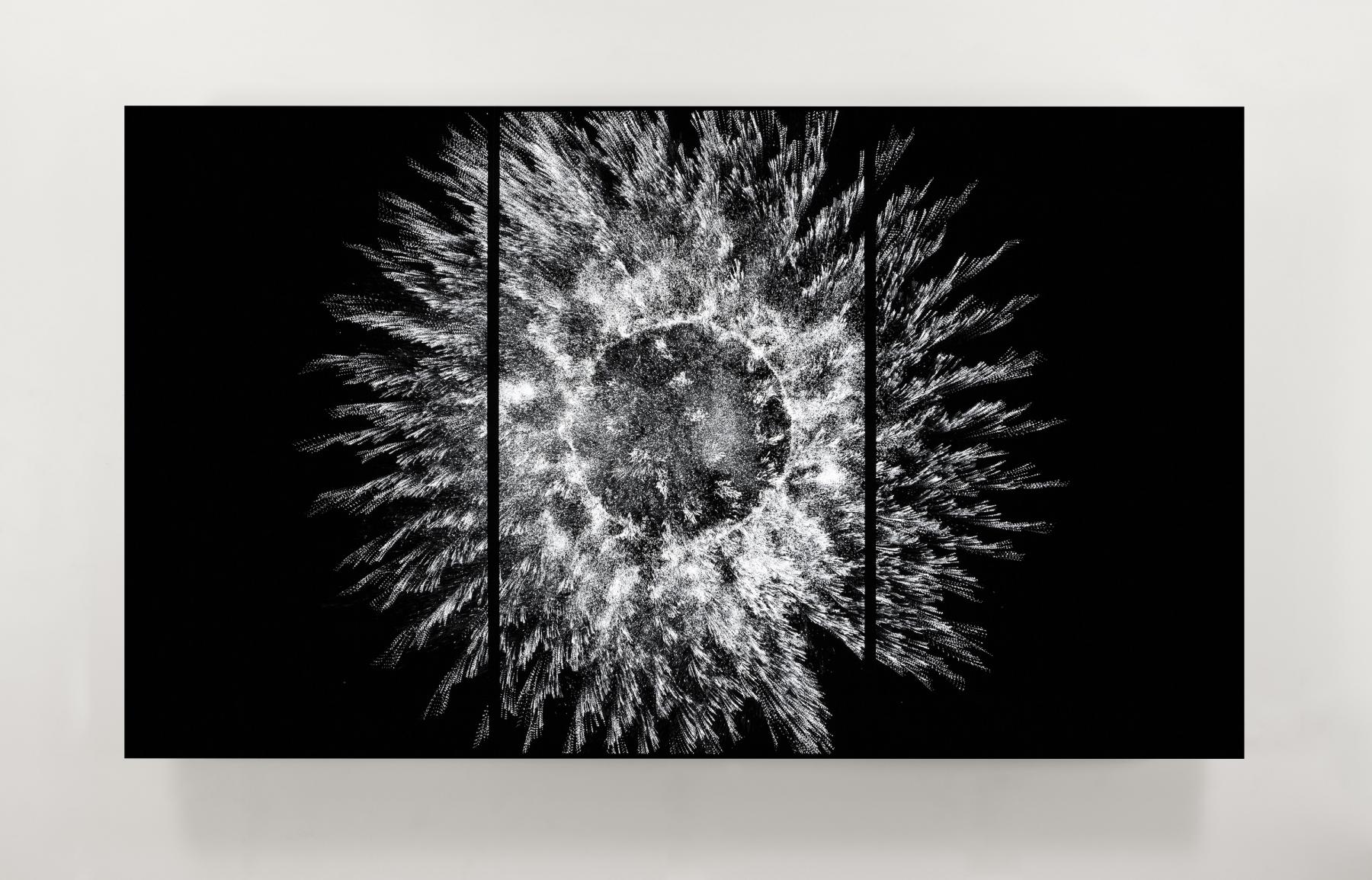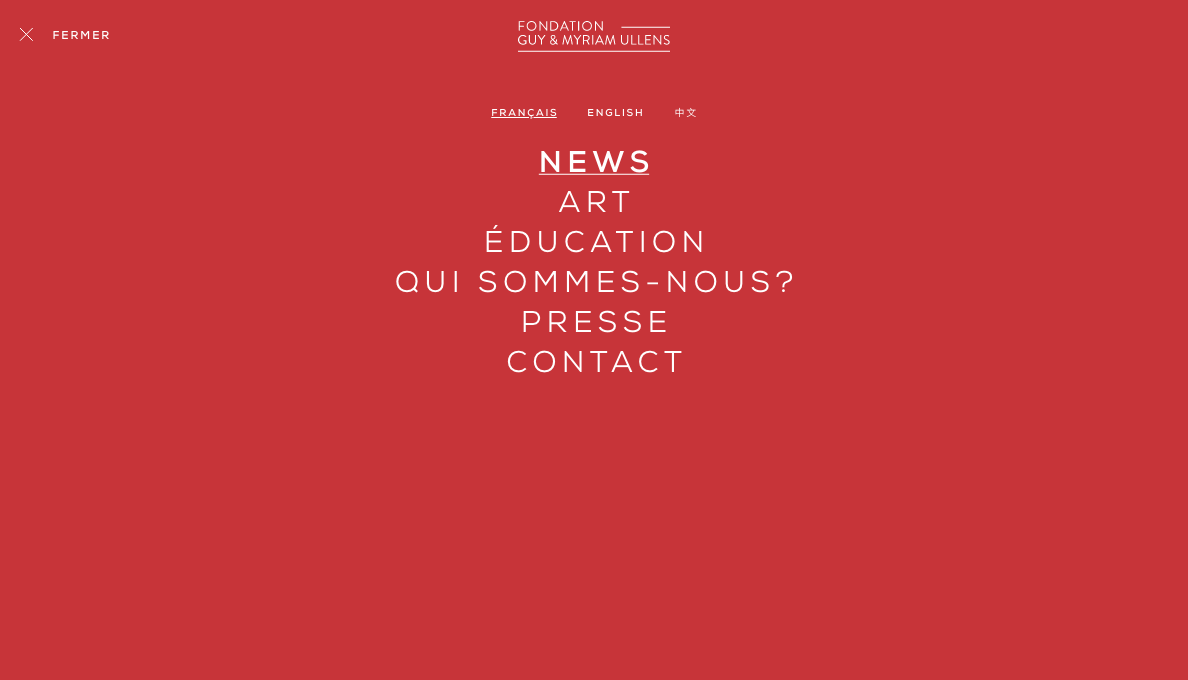The exhibition "Immaterial/Re-material"
A Brief History of Computing Art is opening on the 26th of september
"Immaterial/Re-material: A Brief History of Computing Art"
Released September 25, 2020
UCCA presents “Immaterial/Re-material,” a multi-generational group exhibition tracing the history, present, and future of computing art.
From September 26, 2020 to January 17, 2021, UCCA Center for Contemporary Art presents “Immaterial/Re-material: A Brief History of Computing Art,” a wide-ranging overview of the evolution of computing art from the 1960s to the present, exploring topics that span from machine-learning aesthetics to digital objecthood and technological discontent. The exhibition defines its area of focus not simply as digital art in general, but art-making that actively engages with the algorithms and generative logics that undergird the field of computing. Curator Jerome Neutres, in collaboration with UCCA curator Ara Qiu, brings together works by 29 artists and duos, from early pioneers of computing art to leading digital practitioners, as well as emerging Chinese artists. The show’s title pays tribute to Jean-François Lyotard’s groundbreaking 1985 exhibition “Les Immatériaux,” which conceived of a new mode of materiality that echoed advances in telecommunications technology. By exploring the broad possibilities of computing art and the philosophies underpinning it, “Immaterial/Re-material” aims to write a new chapter in the history of this medium, approaching it as not simply a new media form, but as an entire artistic language. The exhibition is made possible through technological support from lead AI partner Baidu, and major organizational and lending support from Fondation Guy & Myriam Ullens.
Participating artists include aaajiao (b. 1984, Xi’an), Memo Akten (b. 1975, Istanbul), Refik Anadol (b. 1985, Istanbul), Michel Bret (b. 1941, Lyon) and Edmond Couchot (b. 1932, Paris), Celyn Bricker (b. 1989, Liverpool) and Faye Lu (b. 1988, Jilin, China), Miguel Chevalier (b. 1959, Mexico City), Harold Cohen (1928-2016, London), Elias Crespin (b. 1965, Caracas), Fei Yining (b. 1990, Harbin) and Chuck Kuan (b. 1993, Qingdao), John Gerrard (b. 1974, Dublin), Ryoji Ikeda (b. 1966, Gifu, Japan), Peter Kogler (b. 1959, Innsbruck, Austria), Lin Ke (b. 1984, Wenzhou, China), Liu Wa (b. 1994, Beijing), Lu Yang (b. 1984, Shanghai), Laurent Mignonneau (b. 1967, Angoulême, France) and Christa Sommerer (b. 1964, Ohlsdorf, Austria), Manfred Mohr (b. 1938, Pforzheim, Germany), Vera Molnar (b. 1924, Budapest), Leonel Moura (b. 1948, Lisbon), Frieder Nake (b. 1938, Stuttgart, Germany), Michel Paysant (b. 1955, Bouzonville, France), Quayola (b. 1982, Rome), Alan Rath (b. 1959, Cincinnati), Casey Reas (b. 1972, Ohio, USA), Daniel Rozin (b. 1961, Jerusalem), Charles Sandison (b. 1969, Haltwhistle, United Kingdom), Leo Villareal (b. 1967, Albuquerque, USA), Wang Yuyang (b. 1979, Harbin), and Yang Yongliang (b. 1980, Shanghai).
If “Les Immatériaux” provided a preview of the postmodern through art created by tools born of modernity yet also capable of fracturing it, 35 years later “Immaterial/Re-material” simultaneously glances back to the origins of computing art, examines our postmodern present, and then looks ahead to what paradigms may come next. The exhibition does not deny the material per se, but rather investigates how algorithmic creativity has both been re-materialized into more traditional formats such as paper and canvas, and channeled into novel, indefinable experiences, blurring boundaries between the physical and intangible.
The exhibition is arranged into four main sections, which gesture towards the progression of computing art, and different approaches within the field as a whole. Opening section “Pioneers of Computing Art: The Invention of a New Palette” focuses on the work of artists including Harold Cohen, Manfred Mohr, Vera Molnar, and Frieder Nake, who as early as the 1960s began using algorithms to create drawings and paintings, long before computers had attained their current sophistication and ubiquity. In the next section, “Generative Art: A Language for Infinity,” computing power is harnessed to create self-sustaining artworks that transcend durational limits. While artists such as Ryoji Ikeda grant digital code a kind of materiality in its own right, John Gerrard and Leo Villareal alternately simulate and distort reality, and Michel Bret and Edmond Couchot, Laurent Mignonneau and Christa Sommerer, and others bring an element of interactivity to their pieces, positioning each work as a collaboration between artist, algorithm, and viewer.
Questions of authorship are further explored in the next section “AI Art-lab: When the Artist Creates Creation,” which asks what role the artist may play when creative decisions can be delegated to Artificial Intelligence. From Michel Paysant’s “drawings” created through computer tracking of eye movements, to Memo Akten’s use of machine learning to depict the entire history of the universe in video form, the works within suggest that artists might find space for intervention in how they construct, and the inputs they select for, digital systems. The fresh possibilities, yet also anxieties, posed by such technologies are faced head-on in the final section, “Illusions and Disillusions of the Post-digital Era.” Artists such as Quayola and Yang Yongliang reflect on contemporary experience by digitally reconstructing past moments in art history; while others, in particular a younger generation of Chinese artists, including Lu Yang, Lin Ke, and Fei Yining (in collaboration with Chuck Kuan) express a subtle ambivalence towards our hyper-networked world, despite their own identities as digital natives creating work steeped in global online culture.
In addition to the above-mentioned sections, “Immaterial/Re-material” also features a special unit curated and mounted in collaboration with Baidu AI. The section features interactive, generative works from Ceyln Bricker and Faye Lu, Miguel Chevalier, and Daniel Rozin, in which the presence of the viewer actively shapes each piece’s visual expression.
Showing work by twentieth century pioneers alongside that of artists who have grown up together with digital technology, the exhibition at once excavates the historical roots of computing art and opens up conversations about its future shape. Despite fears over the loss of human control, invasive data collection, and other potential ill effects of technological acceleration, the youngest artists in the exhibition amply illustrate how even consumer-grade software and equipment may be repurposed and contorted to deliver creative breakthroughs. By being staged in Beijing, where the integration of digital technology into daily life is reaching unprecedented levels, and at a time when resurgent geopolitical boundaries underscore the importance of “immaterial” electronic communications, “Immaterial/Re-material” provides a vital snapshot of how artists have responded and are responding to our ever-more algorithmic world.
As curator Jerome Neutres comments in his exhibition catalogue essay, “We aim to show how the pioneers of yesterday and the emerging figures of today are walking the same path, from the immaterial to the re-material, and how their visions of the homo digitalis—the new human civilization—have evolved. The exhibition demonstrates that computing technology is a true medium of art, one that generates an infinite number of visual possibilities, and not just an experimental school or short-lived art movement.”
“UCCA is proud to present this special overview of a kind of art-making that has become increasingly central to all of our lives. We are grateful to the artists for their patience throughout the delays caused by the Covid-19 pandemic, and for their creativity in thinking with us about how to remotely install complex works. We are excited to have the opportunity to deepen and expand the exhibition through our collaboration with Baidu AI, and delighted to have a new chance to work with our founding patrons, Guy and Myriam Ullens, on this timely and urgent topic,” noted Director and Chief Executive Philip Tinari
Exhibition Catalogue
UCCA will publish a bilingual exhibition catalogue to accompany “Immaterial/Re-material.” The publication is formatted into two sections, “Images,” including comprehensive documentation of each exhibited artwork, and “Texts,” which features artist interviews and work descriptions alongside essays by exhibition curator Jerome Neutres, renowned philosopher of technology Yuk Hui, and pioneering digital artist Edmond Couchot, who shares a personal account of the origins of computing art. The book also features a distinctive augmented reality cover and is accompanied by a catalogue website (imrm.ucca.org.cn) that hosts videos of all of the moving image works. Together, these elements expand upon the exhibition’s exploration of computing art’s past and future. Both the physical publication and website are designed by Beijing’s loof.design. The catalogue is published by Beijing’s Culture and Art Publishing House.
Sponsorship and Support
Baidu serves as lead AI partner. Major exhibition support comes from Fondation Guy & Myriam Ullens. UCCA Strategic Partner BenQ serves as video equipment sponsor, and UCCA Strategic Partner Dulux provides environmentally friendly solutions for wall painting. Genelec provides exclusive audio equipment support. UCCA thanks the members of its Foundation Council, International Circle, and Young Associates, as well as Annual Strategic Partners Aranya, Bloomberg, Barco, Clivet, and Active House, for their support.
About UCCA
UCCA Center for Contemporary Art is China’s leading contemporary art institution. Committed to the belief that art can deepen lives and transcend boundaries, UCCA presents a wide range of exhibitions, public programs, and research initiatives to a public of more than one million visitors each year. UCCA Beijing sits at the heart of the 798 Art District, occupying 10,000 square meters of factory chambers built in 1957 and regenerated in 2019 by OMA. UCCA Dune, designed by Open Architecture, lies beneath the sand in the seaside enclave of Aranya in Beidaihe. Formally accredited as a museum by the Beijing Cultural Bureau in 2018, UCCA also operates non-profit foundations, licensed by the Beijing Bureau of Civil Affairs and the Hong Kong government. UCCA’s commercial ventures include the retail platform UCCA Store, the children’s education initiative UCCA Kids, and collaborations and projects under the rubric UCCA Lab. Opened in 2007 and revived by a committed group of Chinese and international patrons in 2017, UCCA works to bring China into global dialogue through contemporary art.

